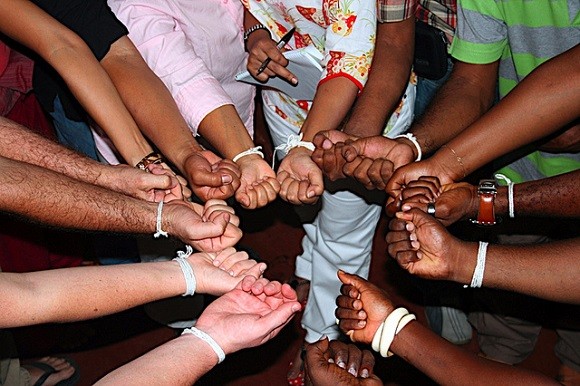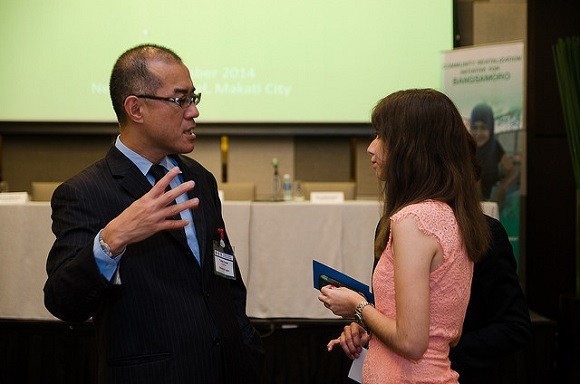 Innovative peacebuilding initiatives have helped to bring people together in the Philippines, and there is hope that a final settlement to some of its conflict issues may soon be reached. Image credit: Nonviolent Peaceforce.
Innovative peacebuilding initiatives have helped to bring people together in the Philippines, and there is hope that a final settlement to some of its conflict issues may soon be reached. Image credit: Nonviolent Peaceforce.The Philippines has been at the forefront in Asia, and around the world, of non-violent social change. It has a vibrant civil society, a freewheeling democracy and a relatively open press. The seeds for these were planted during the post-colonial revolutionary movements of the 1960s, germinating underground during the martial law period of the 1970s.
They finally bore fruit in 1986, with the nearly bloodless People Power revolution that toppled the dictatorship of US-backed Ferdinand Marcos. Through the end of the twentieth century and into the first decades of the twenty-first, civil society in the Philippines has matured in a more open, democratic space.
The Philippines: progress yet problems
The Philippines is considered one of the most gender progressive nations in the world, with several female presidents and chief peace negotiators, as well as women leaders represented in all sectors of society. Yet in a recent impunity index, the Philippines ranked worst out of 59 countries evaluated, failing in its implementation of security, justice and human rights, the 3 main components of impunity. Meanwhile, the Committee to Protect Journalists ranks the Philippines as one of the deadliest in the world for local reporters.
Mindanao: a centre for social strife
While the MILF and MNLF have come to uneven levels of negotiated settlement with the government, the CPP-NPA remains in a state of protracted struggle for national liberation, as negotiations with the government stall under the current administration of President Benigno Aquino. The CPP-NPA has organised the rural poor and indigenous people groups in Mindanao by highlighting corrupt governance and military collusion, combined with highly skewed land ownership and dynastic political elites. They have also tapped Filipino nationalist energy by condemning American interference in local affairs and widespread foreign exploitation of major natural resources in Mindanao, especially gold and other metallic minerals.
 Delegates at a 2014 conference on the Bangasamoro region. Image credit: IOM.
Delegates at a 2014 conference on the Bangasamoro region. Image credit: IOM.New initiatives: a prospect of lasting peace
The current focus of peacebuilding in Mindanao has revolved around the 17 years of negotiations between the MILF and the Philippine government, which resulted in a peace agreement signed in March of 2014 called the Comprehensive Agreement on the Bangsamoro (CAB). This was negotiated with the MILF after a previous agreement with the MNLF faction, agreed in 1997, fell apart and was declared a ‘failed experiment’ by the current Philippine president. Still, efforts are ongoing to bridge the leadership of the MNLF with the CAB in order to harmonise their efforts and attain a long term, sustainable peace with the two revolutionary groups.
Thus, since the 1990s, the Philippines has seen a blossoming grassroots peacebuilding movement that has anchored the work for social justice and reconciliation within the country. This has been most prominent in Mindanao, where numerous civil society actors have taken up major parts in the formal peace process and played significant consultative roles, as well as undertaking direct action at the community level.
They have supported, by peaceful means, the right to self-determination of minority religious and cultural communities, which had been the basis for armed struggle. Another innovation is the convening of international NGOs and foreign governments in the International Contact Group allowing a formal seat at the negotiating table for independent and alternative input.
This has allowed not only for national and international actors, but also local and regional bodies to play a part in the Bangsamoro peace process. Thus, learning from the experience in Mindanao could be useful for peace practitioners not only in Asia, but across the globe.







